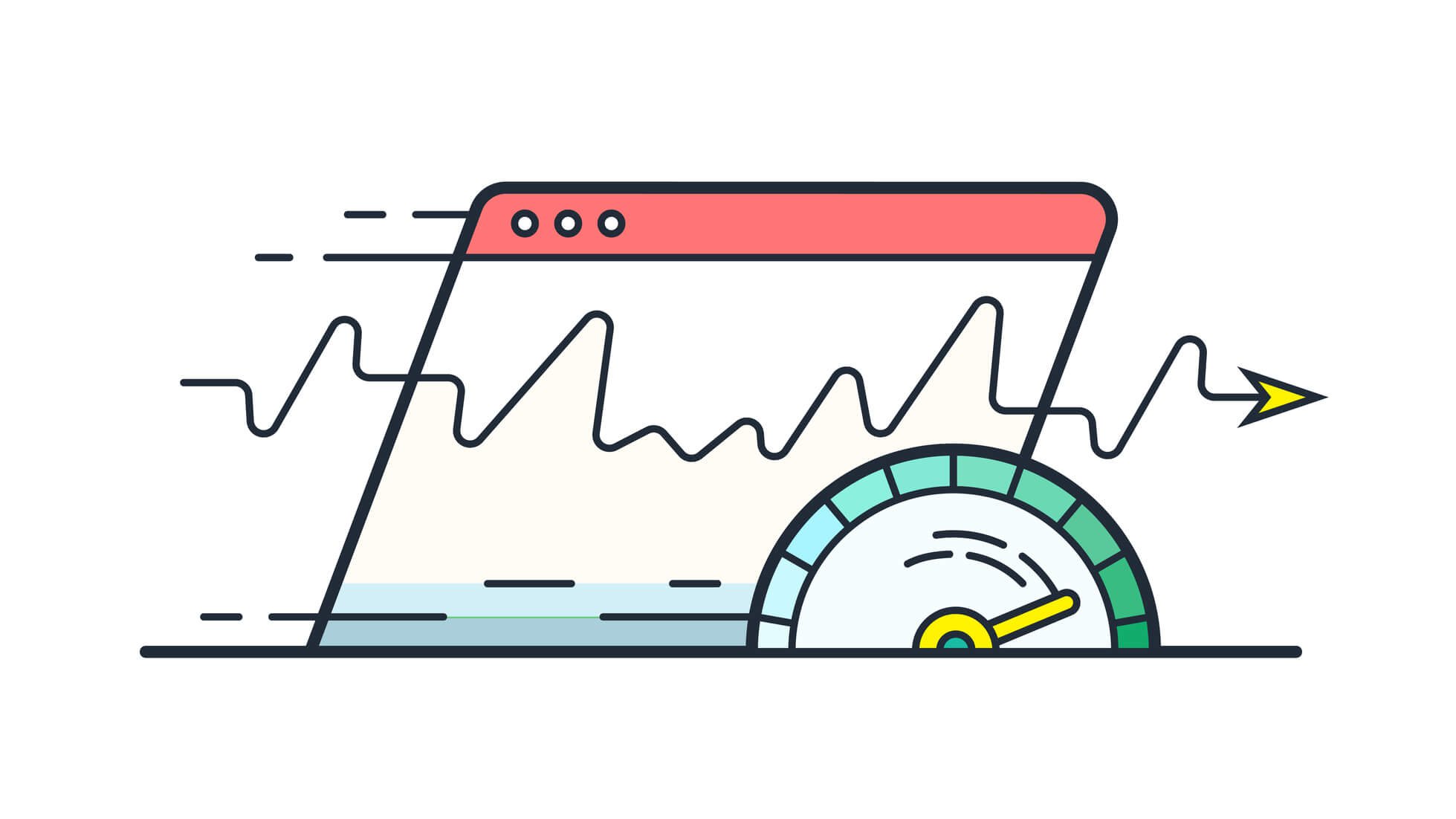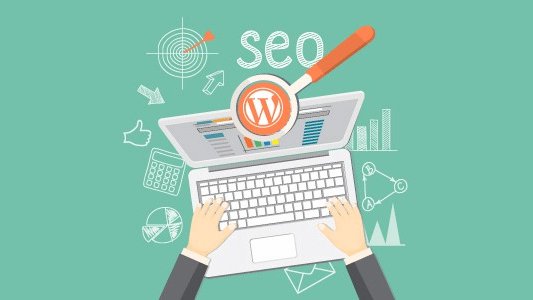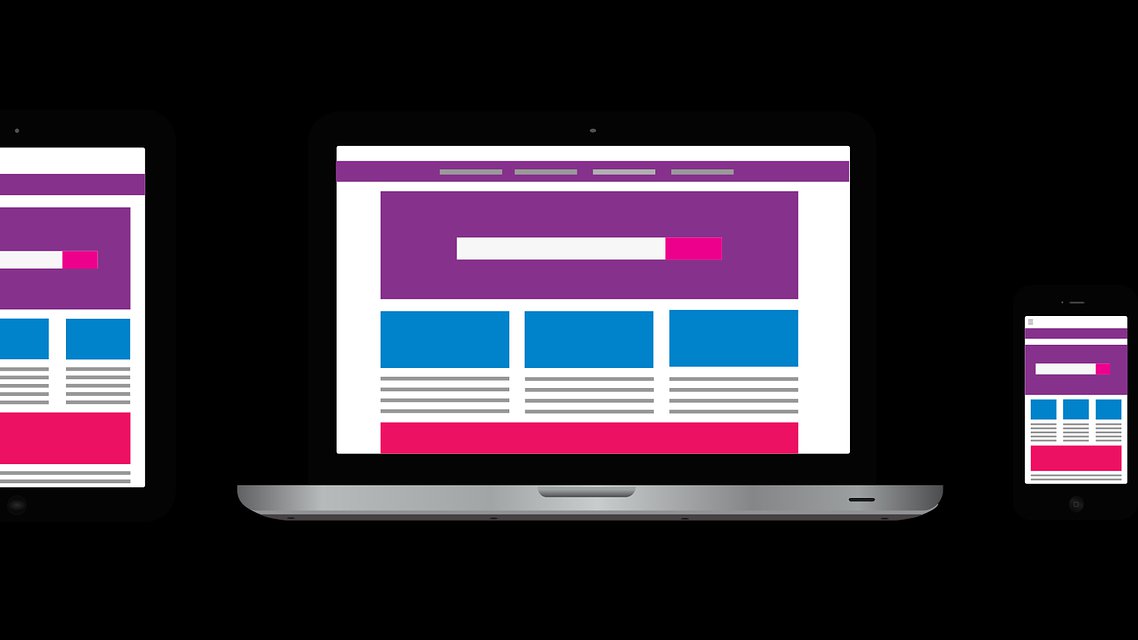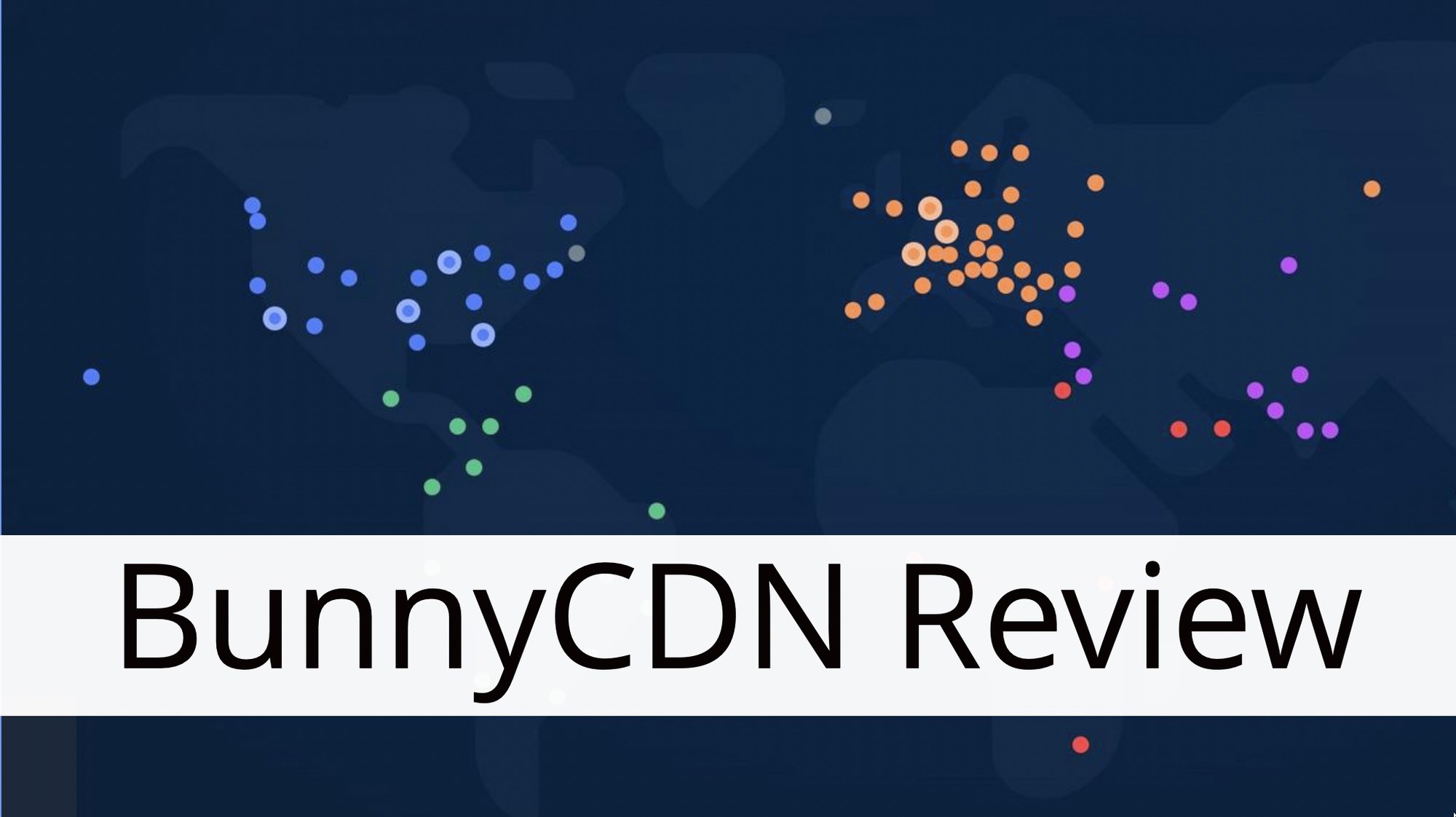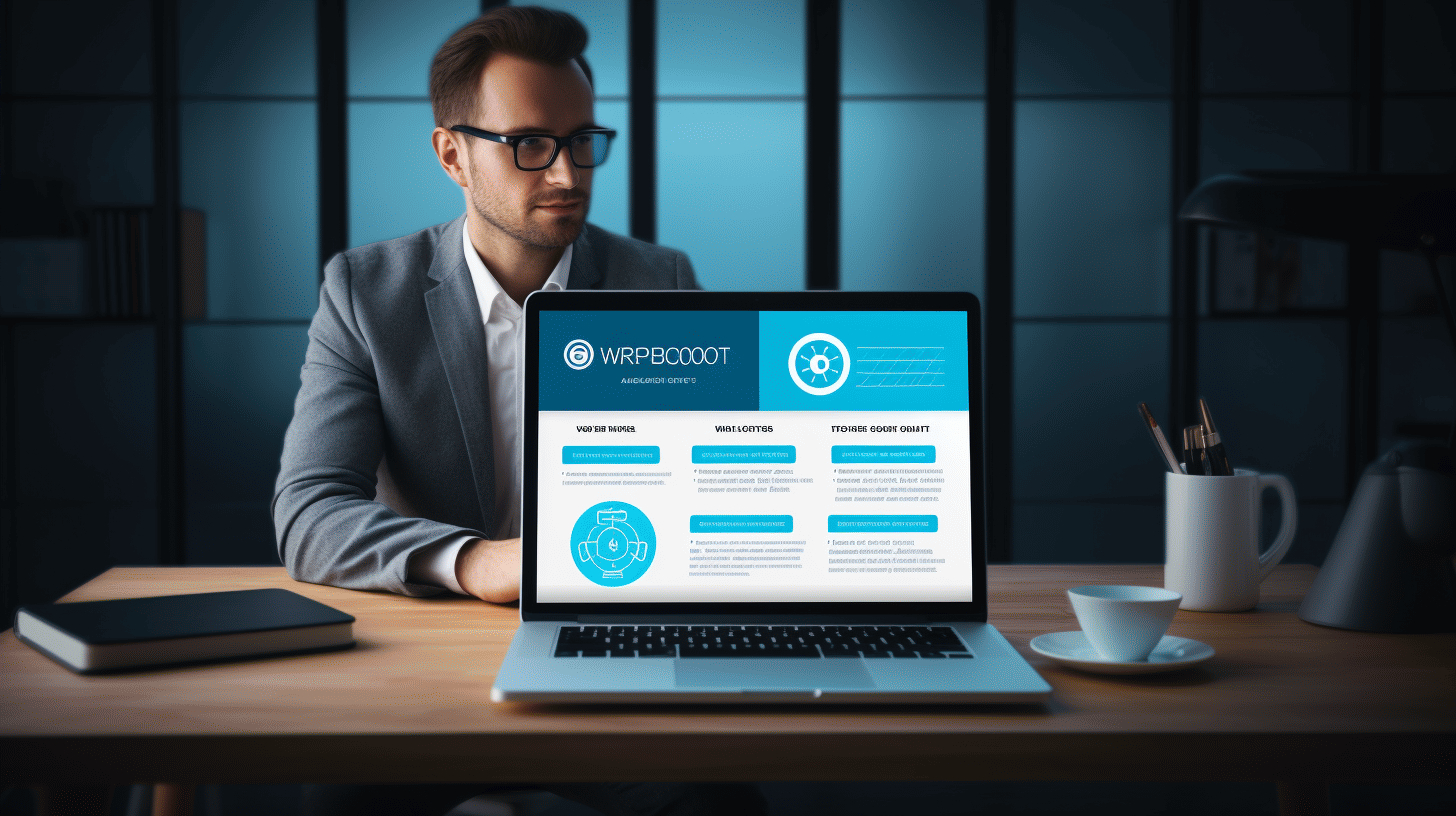In today’s digital age, having a well-performing website is crucial for any business or individual looking to make an impact online. When it comes to creating and maintaining websites, WordPress has emerged as one of the most popular platforms. Its user-friendly interface and extensive range of plugins make it a go-to choice for many webmasters. However, simply having a WordPress site is not enough. To truly unlock its potential and ensure a seamless user experience, website owners must optimize their websites effectively.
Website optimization encompasses various factors that contribute to improved performance, user engagement, and search engine visibility. From hosting and theme selection to image and plugin optimization, each element plays a crucial role in ensuring that your website is running at its best. By following best practices for WordPress optimization, you can provide visitors with a fast, efficient, and visually appealing experience that will keep them coming back for more.
In this article, we will explore the key best practices for optimizing your WordPress website. We will delve into topics such as upgrading your PHP version, enabling GZIP compression, optimizing your database, and tracking website speed. We will also discuss the importance of using SEO plugins, image optimization techniques, and making thoughtful choices when it comes to selecting themes and frameworks. By implementing these techniques, you will be well on your way to unlocking the full potential of your WordPress website.
So, whether you’re a business owner, a blogger, or a freelancer, get ready to take your WordPress website to the next level. Let’s dive in and discover the best practices that will help you optimize your website’s performance, enhance user experience, and boost your search engine rankings.
Optimizing Website Performance
In today’s fast-paced digital landscape, having a fast and optimized website is crucial for attracting and retaining visitors. Slow-loading sites not only frustrate users but also negatively impact search engine rankings. Thankfully, there are several tactics you can employ to boost your website’s performance and create a smooth user experience. Let’s explore some of the most effective strategies:
Use a good hosting service
Choosing a reliable hosting service lays the foundation for a high-performing website. A reputable hosting provider will ensure that your site remains accessible and responsive, even during traffic spikes. Investing in a quality hosting service can significantly improve website performance and speed, keeping your users happy and engaged.
Choose a high-quality WordPress theme
Your choice of WordPress theme plays a significant role in website performance optimization. Opting for a well-built and optimized theme can make a world of difference in how quickly your site loads. Look for themes that have clean code, are lightweight, and follow best practices for performance. A high-quality theme will help your website load faster and provide a seamless browsing experience for your visitors.
Optimize images
Images are essential for enhancing the visual appeal of your website, but large file sizes can severely impact loading times. By optimizing images and reducing their file sizes, you can significantly improve website speed. Make use of compression tools or WordPress plugins designed specifically for image optimization. This will ensure your images maintain their quality while loading quickly on your website.
Implement caching
Caching is a technique that involves storing temporary copies of your website’s pages. By implementing caching, you can enhance loading speed by serving these cached copies instead of generating pages from scratch. Utilize WordPress caching plugins or explore server-side caching options offered by your hosting provider. Caching effectively reduces the load on your server, resulting in faster load times for your visitors.
Deactivate unnecessary plugins
While plugins can extend the functionality of your website, having too many active plugins can slow down your site. Each plugin requires additional server resources to function, which can lead to increased loading times. Regularly assess your active plugins and deactivate any that are unnecessary or unused. This simple step can help prevent website slowdowns and streamline your website’s performance.
Clear page cache regularly
If you’re utilizing a caching plugin or server-side caching, it’s important to periodically clear your page cache. This ensures that any changes you make to your website are reflected immediately and that your visitors always see the most up-to-date version of your site. Regularly clearing your page cache is essential for maintaining optimal performance and delivering a consistent user experience.
Reduce HTTP requests
Every element on your website, including images, CSS, and JavaScript files, requires an HTTP request to the server. The more requests your website makes, the longer it takes to load. By reducing the number of HTTP requests, you can improve the speed of your website. Combine files when possible, minify code, and make use of browser caching to reduce the number of requests and streamline your site’s performance.
Avoid redirects
Redirects can be useful for managing outdated URLs or redirecting users to the correct pages. However, excessive redirects can slow down your website, as each redirect requires an additional HTTP request. Minimize the use of redirects and opt for direct links whenever possible. Keeping your website’s URL structure simple and straightforward can help enhance loading speed and improve user experience.
Minify HTML
Minifying your website’s HTML code involves removing unnecessary white spaces, comments, and formatting to reduce the file size. Smaller HTML files load faster and contribute to quicker overall website performance. Consider utilizing tools or plugins that automatically minify your HTML code to optimize your site’s loading speed.
Prioritize visible content
When a user visits your website, the content that is visible without scrolling should load first. This helps create the perception of a fast-loading website and keeps visitors engaged while additional elements load. Prioritizing visible content can be achieved by optimizing the critical rendering path and leveraging techniques such as lazy loading for images and deferred loading for non-critical scripts. By doing so, you provide a seamless and smooth experience for your users.
Consider using a lightweight WordPress theme
Lastly, consider using a lightweight WordPress theme to prevent unnecessary bloat on your website. A lightweight theme focuses on essential features, avoiding excessive scripts or styles that can slow down your site. Look for themes that prioritize performance optimization, have a minimalistic design, and provide the necessary flexibility for your website’s functionality. Choosing a lightweight WordPress theme can contribute to faster loading times and an improved user experience.
By implementing these best practices and techniques, you can optimize your website for speed and performance, ensuring that your visitors have an enjoyable browsing experience. Remember, a fast-loading site not only benefits your users but also enhances your search engine rankings and overall online presence.
To explore more about WordPress speed optimization techniques, check out 10 WordPress Speed Optimization.
Upgrading PHP Version
If you’re running a WordPress site, you’ve probably heard about the importance of keeping your PHP version up to date. Upgrading to the latest PHP version not only ensures the security and stability of your website but also offers various performance improvements. In this section, we’ll explore why upgrading your PHP version is essential and how it can benefit your WordPress site.
Upgrade to the latest PHP version
Updating your PHP version is like giving your website a much-needed boost. With each new release, PHP brings significant improvements in terms of speed, security, and functionality. Here are a few reasons why you should consider upgrading to the latest PHP version:
- Improved Performance: The latest PHP versions come with performance optimizations that can significantly speed up your WordPress site. From faster request handling to reduced memory usage, these improvements contribute to a smoother and more responsive user experience.
- Enhanced Security: PHP developers are constantly working to fix security vulnerabilities and strengthen the language’s security features. By upgrading to the latest version, you ensure that your website is protected against known vulnerabilities and have access to the latest security patches.
- New Features and Functionality: Upgrading PHP introduces new features and enhancements that can benefit your website. These updates offer a wider range of capabilities, allowing you to take advantage of the latest advancements in web development.
Before upgrading your PHP version, it’s crucial to check if your WordPress theme and plugins are compatible with the new version. Some older themes and plugins may require updates to work seamlessly with the latest PHP release. Running compatibility tests or reaching out to theme/plugin developers can help ensure a smooth transition.
Benefit from performance improvements
One significant advantage of upgrading to the latest PHP version is the performance improvements it brings to your WordPress site. A faster, more optimized website not only enhances the user experience but also provides several other benefits:
- Improved Search Engine Optimization (SEO): Page load speed is a key factor in search engine rankings. By upgrading your PHP version, you can improve your website’s performance, leading to faster load times and potentially higher search engine rankings.
- Better User Engagement: A slow-loading website frustrates visitors and often leads to high bounce rates. By upgrading to the latest PHP version, you can provide a seamless browsing experience, keeping users engaged with your content and reducing the likelihood of them leaving your site.
- Increased Conversion Rates: Faster load times and improved performance can have a direct impact on your conversion rates. Users are more likely to convert into customers or take desired actions on a website that loads quickly, functions smoothly, and delivers a seamless user experience.
- Scalability and Future Growth: Upgrading your PHP version not only benefits your current website but also prepares you for future scalability and growth. With improved performance and increased efficiency, your website can handle higher traffic loads and accommodate future expansion.
By upgrading your PHP version, you can unlock these performance improvements and position your WordPress site for success. So, take the time to check your current PHP version and make the necessary updates to ensure you’re running on the latest release.
Additional info: Upgrading to the latest PHP version can bring performance improvements to your WordPress site.
Enabling GZIP Compression
Imagine visiting a website that takes forever to load. Frustrating, right? Slow website loading speed is not only irritating for users but can also negatively impact search engine rankings. Thankfully, there is a powerful tool called GZIP compression that can help alleviate this issue and improve website performance.
So, what exactly is GZIP compression? In simple terms, GZIP compression is a method of reducing the size of files sent from a web server to a browser. It works by compressing the files, such as HTML, CSS, and JavaScript, before they are sent to the user’s browser. This compression technique significantly reduces the file size, resulting in faster download times.
Enabling GZIP compression on your website is a relatively simple and effective way to improve loading speed and enhance user experience. Here are some steps to help you enable GZIP compression:
- Check if GZIP compression is already enabled: Before you proceed with enabling GZIP compression, it’s a good idea to check if it is already activated on your website. You can use online tools or browser extensions that analyze HTTP headers to determine if GZIP compression is enabled. If it’s already enabled, fantastic! If not, don’t worry, we’ve got you covered.
- Configure GZIP compression on your web server: Enabling GZIP compression requires modifying the server configuration. The specific steps for configuring GZIP compression vary depending on the type of server you are using. Here’s a general outline of how to enable GZIP compression on some popular web servers:
Apache
Enable GZIP compression by adding the following lines to your .htaccess file:
<IfModule mod_deflate.c>
AddOutputFilterByType DEFLATE text/html text/plain text/xml text/css text/javascript application/javascript application/x-javascript
</IfModule>
NGINX
Add the following lines to your nginx.conf file, typically located in the /etc/nginx/ directory:
gzip on;
gzip_types text/html text/plain text/xml text/css text/javascript application/javascript application/x-javascript;
- Test GZIP compression: Once you have enabled GZIP compression, it’s crucial to test if it’s working correctly. You can use various online tools or browser extensions to check if GZIP compression is properly enabled on your website. These tools analyze HTTP response headers and provide detailed information about whether GZIP compression is being utilized.
By enabling GZIP compression, you can significantly reduce the file sizes of your web resources, leading to faster load times for your website visitors. Remember, improving website performance is not only beneficial for user experience but can also positively impact your search engine rankings.
So, go ahead and enable GZIP compression on your website to give your users a seamless browsing experience and boost your website’s loading speed!
Database Optimization
Optimize and clean up your database
Regularly optimizing and cleaning up your database helps maintain optimal website performance. When your website relies on a database to store and retrieve data, it’s crucial to ensure that the database is working efficiently. By organizing, optimizing, and cleaning up your database, you can improve website speed, enhance user experience, and even boost your search engine rankings.
Why is database optimization important?
A database that is not properly optimized can slow down your website and lead to various issues, including:
- Slow loading times: A bloated and cluttered database can increase the time it takes for your website to load. This can frustrate your users and discourage them from staying on your site.
- Poor user experience: When website performance suffers, visitors are more likely to leave and find a faster alternative. Optimizing your database improves overall user experience and keeps them engaged.
- Search engine rankings: Search engines take website performance into account when determining search rankings. A slow website due to an unoptimized database can negatively impact your search engine optimization efforts.
How to optimize and clean up your database
Here are some essential tips to help you optimize and clean up your database for improved website performance:
- Remove unnecessary data: Identify and remove any unnecessary data, such as unused plugins, themes, or inactive user accounts. This helps reduce the size of your database and improves its efficiency.
- Update your database regularly: Make sure you are using the latest version of your database management software. Regular updates often include performance improvements and bug fixes.
- Optimize database tables: Optimize your database tables to eliminate fragmentation and optimize storage. This can be done manually using SQL queries or through plugins or tools designed for database optimization.
- Enable caching: Use caching techniques to reduce the load on your database. Caching stores frequently accessed data in a temporary storage, reducing the need for database queries and improving overall performance.
- Limit database calls: Minimize the number of database queries your website makes by optimizing your code. Avoid unnecessary database calls and optimize queries for better efficiency.
By following these tips, you can ensure that your database is optimized, clean, and functioning at its best. Regularly performing these optimization tasks will help maintain optimal website performance and provide your users with a seamless experience.
Remember, a well-optimized database is the backbone of a high-performing website. Take the time to regularly optimize and clean up your database, and you’ll reap the benefits of improved website speed, user experience, and search engine rankings.
Tracking Website Speed
Tracking website speed is an essential practice for any website owner or developer. In today’s fast-paced digital world, users have little patience for slow-loading websites. Slow load times can lead to frustrated visitors, higher bounce rates, and ultimately, lost business opportunities. Therefore, it is crucial to monitor and optimize your website’s speed to provide a seamless user experience.
Here are a few reasons why tracking website speed is important:
- Identifying areas for improvement: By monitoring your website’s speed regularly, you can identify any areas that are causing delays or bottlenecks. This could include large images, excessive server requests, or bloated code that needs optimization. Knowing what is slowing down your website allows you to take targeted actions to improve its performance.
- Ensuring a fast user experience: User experience is a key factor in keeping visitors engaged and encouraging them to explore your website further. If your web pages take too long to load, users are more likely to abandon the site and look elsewhere. By tracking your website speed, you can ensure that your pages load quickly, creating a positive user experience and increasing the likelihood of conversions.
- Improving search engine rankings: Website speed is one of the factors that search engines consider when determining rankings. A slow-loading website can negatively impact your search engine optimization (SEO) efforts and result in lower visibility in search engine results pages. By tracking and improving your website speed, you can boost your chances of ranking higher and attracting more organic traffic.
- Staying ahead of the competition: In today’s competitive digital landscape, every second counts. Users have come to expect fast, responsive websites, and your competitors are likely striving to deliver the best user experience possible. By tracking your website speed and making optimizations, you can stay ahead of the competition and provide a better experience for your users.
Monitoring and optimizing website speed is a continuous process, as technologies, user expectations, and web standards evolve. By utilizing tools and techniques to track your website’s speed, you can ensure that your website remains fast, efficient, and user-friendly.
Remember, a speedy website not only improves user experience but also contributes to better search engine rankings and increased conversions. Stay vigilant in tracking your website’s speed, identifying areas for improvement, and implementing optimizations to provide the best possible user experience.
Using SEO Plugins
In today’s digital age, having a strong online presence is crucial for the success of any website. One of the most effective ways to increase visibility and drive organic traffic to your WordPress website is by implementing SEO strategies. And what better way to optimize your website for search engines than by using SEO plugins?
Use an SEO-specific plugin
When it comes to optimizing your website for search engines, using an SEO-specific plugin can make a world of difference. These plugins are specifically designed to enhance the SEO performance of your WordPress website, making it easier for search engines to crawl and index your content.
Not sure which plugin to choose? Well, one widely popular option is the WordPress SEO for Website plugin. This powerful tool provides a comprehensive set of features that can help you master the art of WordPress SEO. Let’s take a look at some of the benefits of using an SEO plugin:
- Keyword optimization: An SEO plugin allows you to easily optimize your content for keywords and keyphrases that are relevant to your target audience. This helps search engines understand the context of your content and rank it higher in search results.
- Title and meta tag optimization: By using an SEO plugin, you can effortlessly customize your website’s title tags, meta descriptions, and other crucial meta tags. These elements play a significant role in getting your website noticed by search engines and users alike.
- XML sitemap creation: SEO plugins simplifies the process of creating an XML sitemap for your website. This sitemap acts as a road map for search engines, informing them about the structure and organization of your website’s content. This, in turn, helps search engines index your pages more efficiently.
- Social media integration: Many SEO plugins offer social media integration features, allowing you to optimize your content for social sharing. This can help increase your website’s visibility on various social media platforms, driving more traffic to your website.
Using an SEO plugin can optimize your WordPress website for search engines and improve rankings. So, don’t underestimate the power of these handy tools in your quest for online success. Take advantage of their features and watch your website soar to new heights in the search engine rankings!
Image Optimization
Images play a crucial role in enhancing the visual appeal of a website. However, it’s important to optimize them to ensure they don’t slow down the site’s performance. One way to achieve this is by resizing and optimizing the images.
When it comes to image optimization, there are a few key principles to keep in mind. By following these guidelines, you can strike a balance between visual quality and website performance. In this section, we will discuss the benefits of resizing and optimizing images and how to go about it effectively.
Resize and Optimize Images
Resizing and optimizing images goes hand in hand when it comes to enhancing website performance. Here’s why:
- Reduced File Sizes: Resizing images helps to reduce their file sizes significantly. By reducing the dimensions of an image, you also reduce the amount of data that needs to be loaded when a user visits your website. This, in turn, improves the load time of your web pages.
- Improved Page Load Speed: Optimizing images ensures that they are compressed without compromising quality. This means that the overall size of the image file is reduced, making it quicker to load. A faster loading time enhances the user experience and reduces the risk of visitors leaving your site due to slow page speeds.
- Better SEO Performance: Search engines take into consideration the loading speed of a website when determining its ranking. By optimizing your images, you improve the loading time and, consequently, enhance your SEO performance. This can potentially lead to better visibility and more organic traffic to your site.
Optimizing your images doesn’t have to be a complicated process. There are several tools and techniques available that can help simplify the task. Here are a few tips to get you started:
- Choose the Right File Format: Selecting the appropriate file format for your images can make a significant difference in file size. JPEG is commonly used for photographs, while PNG is better for graphics with fewer colors and transparent backgrounds.
- Compression: Using image compression tools or plugins can compress your images without visible loss of quality. This reduces file sizes and improves loading times.
- Image Dimensions: Resize your images to the dimensions required by your website layout. This can be done using image editing tools or plugins.
- Lazy Loading: Implement lazy loading, a technique where images are loaded only when they are about to come into view. This reduces the initial page load time and improves overall performance.
By following these best practices, you can ensure that your images are optimized for both visual appeal and website performance. Remember, a website that loads quickly and offers an engaging visual experience is more likely to attract and retain visitors.
Plugin Optimization
In the world of WordPress, plugins are like little extensions that help enhance the functionality of your website. They can add exciting features, optimize performance, and make your life as a website owner much easier. However, it’s important to strike the right balance when it comes to using plugins. While they can be incredibly useful, having too many can lead to plugin bloat and slow loading times, which can ultimately have a negative impact on your website’s performance.
Limit the number of plugins
One of the key aspects of plugin optimization is to limit the number of plugins you have installed on your website. Here’s why:
- Performance optimization: Each plugin adds an extra layer of code, which can slow down your website’s loading speed. The more plugins you have, the more potential there is for conflicts, redundant code, and performance issues.
- Security concerns: While WordPress plugins go through rigorous testing, it’s important to note that they are created by different developers with varying levels of expertise. Having too many plugins increases your website’s attack surface, as it becomes more challenging to keep track of updates and vulnerabilities.
- Maintenance and compatibility: Managing a large number of plugins can be time-consuming. It becomes crucial to regularly update them, ensure compatibility with the latest version of WordPress, and address any conflicts that may arise. This can become quite overwhelming and may require technical expertise.
To avoid these potential pitfalls, it’s a good practice to regularly review the plugins you have installed and ask yourself:
- Do I really need this plugin?
- Is there an alternative solution that doesn’t require a plugin?
- Can I achieve the same functionality by using a smaller number of plugins?
By reducing the number of plugins on your website, you can streamline performance, improve security, and reduce the overall maintenance burden.
“Too many plugins can result in plugin bloat and slow loading times, which can negatively impact your website’s performance.”
Remember, it’s all about finding the right balance. Choose plugins wisely, focusing on those that truly add value to your website and avoiding unnecessary ones. Regularly review your installed plugins and make sure to stay updated with the latest versions. By optimizing your plugins, you can maximize the performance and security of your WordPress website.
Theme and Framework Selection
When it comes to building a WordPress site, choosing the right theme or framework is essential for a smooth and efficient website design process. There are a plethora of options available, but opting for a lightweight theme or framework can offer significant advantages. Not only can it enhance user experience, but it can also improve your site’s overall performance.
Using a lightweight theme or framework can result in faster page load times on your WordPress site. This is crucial because slow-loading websites can lead to high bounce rates and dissatisfied visitors. Plus, search engines like Google prioritize fast-loading sites in their search results, so having a lightweight theme or framework can also positively impact your site’s SEO.
Here are a few reasons why using a lightweight theme or framework can be beneficial for your WordPress site:
- Improved Performance: Lightweight themes and frameworks are designed to minimize the amount of code they include. This means that your site’s performance will be optimized, resulting in faster loading times and improved responsiveness.
- Simplified Customization: Lightweight themes and frameworks often come with clean and minimalistic designs. These designs provide a solid foundation for customization, allowing you to easily tweak the appearance of your site to match your brand identity.
- Enhanced Security: Lightweight themes and frameworks typically prioritize security measures, which can help protect your site from potential vulnerabilities. Regular updates and a focus on secure coding practices contribute to a safer environment for your website.
- Less Clutter: A lightweight theme or framework doesn’t include unnecessary features and functionalities. This means that your site will remain clutter-free, allowing for easier navigation and a more enjoyable user experience.
A great resource to learn more about WordPress themes and frameworks is the comprehensive WordPress Tutorial Themes. This guide provides in-depth information on how to choose, customize, and optimize themes for your WordPress site.
So, whether you’re starting a new WordPress site or revamping your existing one, consider opting for a lightweight theme or framework. By doing so, you’ll be setting a solid foundation for a fast, customizable, secure, and user-friendly website.
Conclusion
In conclusion, optimizing your WordPress website is crucial to unlocking its full potential and delivering a seamless user experience. By following best practices such as using a reliable hosting service, choosing a high-quality theme, optimizing images, implementing caching, and minimizing unnecessary plugins, you can significantly improve your website’s performance.
Upgrading to the latest PHP version and enabling GZIP compression further enhance speed and efficiency. Additionally, optimizing your database, tracking website speed, using SEO plugins, and optimizing images and plugins can all contribute to a faster and more streamlined website.
When it comes to selecting a theme or framework, opting for a lightweight option can help ensure quicker loading times. Remember, every second counts in the digital world, and a fast website is essential for user satisfaction and search engine rankings.
Overall, by implementing these optimization techniques, you can create a website that loads quickly, engages visitors, and boosts your online presence. To take your WordPress website to the next level and enjoy hassle-free management, consider exploring a premium managed WordPress cloud hosting platform like Managed-WP™. With Managed-WP’s expert support and simplified infrastructure, you can focus on creating exceptional digital experiences while leaving the technical aspects in capable hands.
Start maximizing your website’s potential today by visiting Managed-WP for more information.
Frequently Asked Questions
- What are some best practices for WordPress users to unlock their website’s potential?
Some best practices for WordPress users to unlock their website’s potential include: regularly updating WordPress and plugins, choosing a responsive and SEO-friendly theme, optimizing website performance, implementing strong security measures, creating high-quality and engaging content, and utilizing SEO techniques.
- How often should I update WordPress and plugins?
It is recommended to update WordPress and plugins on a regular basis, ideally as soon as updates are available. Regular updates help improve security, fix bugs, and provide new features and enhancements.
- Why is it important to choose a responsive and SEO-friendly theme?
Choosing a responsive theme ensures that your website is easily accessible and user-friendly across different devices, while an SEO-friendly theme helps optimize your website’s structure, code, and content for better search engine visibility and rankings.
- What are some ways to optimize website performance?
To optimize website performance, you can minimize the use of plugins, optimize and compress images, enable caching, utilize a content delivery network (CDN), and leverage browser caching and GZIP compression.
- How can I enhance my website’s security?
Some ways to enhance website security are using strong passwords, enabling two-factor authentication, regularly backing up your website, keeping plugins and themes updated, and installing a reliable security plugin.













